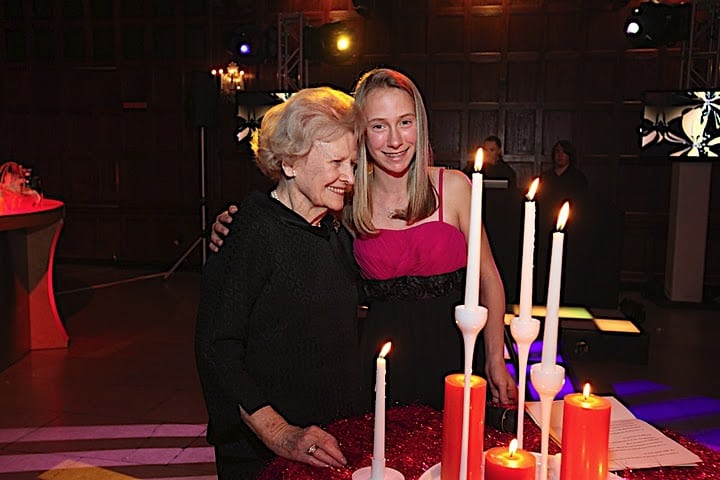We hosted our first Seder as newlyweds in Cincinnati with other transplant friends, and later in our walk-up on Hancock Street in Boston when our kids were little. On Hancock Street, we’d gather snugly around a dining-room table (which now serves as a kitchen table in our current home). I recall  those evenings as harbingers of spring, sunlight angling through sooty, city windows, shining on the yellow daffodils I’d purchased at the grocery store. My little girl in a white short-sleeved dress and patent leather shoes – I hadn’t fully committed to Judaism and the décor was some version of Easter.
those evenings as harbingers of spring, sunlight angling through sooty, city windows, shining on the yellow daffodils I’d purchased at the grocery store. My little girl in a white short-sleeved dress and patent leather shoes – I hadn’t fully committed to Judaism and the décor was some version of Easter.
If there is any one tradition or holiday that sold me on the Jewish religion, it was Passover. I have the fondest memories of being dazzled by the Oelbaum’s Seder as a young girl. Again, John and I were invited to the Meisel’s Seders in Cincinnati where I aspired to ever having a family that would interact with such passion.
By 2004, I’d converted, the kids were on their way to becoming bar and bat mitzvah, and we moved to Chestnut Street. While John and the kids may have been excited about other characteristics of our new home, like a big TV in the family room, or a bedroom of their own, I fell in love with the dining room and a long table that would become an altar every Friday night. I had visions of progeny around that table every Passover.
Preparing for Passover is the beginning of the spiritual journey.
I reflect on all the Jewish women making pesach in their homes as I do in my mine – cleaning, weeding out, preparing for renewal. I also think of all of the women over the past three thousand years who’ve prepared in similar ways right at this point in the calendar. Our conveniences and techniques are different, but we are connected by the desire to sanctify our homes, transforming our dining rooms into holy places.
I also recognize non-Jews who strive for the same harmony in their homes, a holiness stemming from love of family and raising children. As mothers and hostesses, keepers of an unspoken, domestic religion, we all share a generosity of spirit and sustenance.
On the morning of the Seder, with the air rich with hyacinth, I billow a crisply starched, white tablecloth over the dining room table, and honor my matrilineage. The linen napkins were passed down from my maternal grandmother, my namesake, Jeanne Wilmarth Hallenbeck, a women who passed away when I was two but who I’ve heard scores of stories about from my mother. I have a black and white photograph portrait of her framed on a small pantry counter just outside the dining room. She is holding a bouquet, the maid of honor at her sister’s wedding. I imagine her very social era of luncheons, teas, and dinners when it was common to have several sets of placemats, dinner napkins, and luncheon napkins all with embroidered monograms. Receiving them myself as a young bride, I was afraid to use them for fear of staining. Now, they are a tactile way to remember. Like a black and white Mona Lisa, she radiates an approving smile from her photographed face.
The silver candelabras are from my mother and were wedding gifts from her grandparents. Before everyone sits, I will light their six candles before blessing the festival lights:
Baruhk ata Adonai, Eloheinu melecholam. Asher kidshanu bar mitzvah tov, vitzi vanu l”hadlik ner shel Yom Tov.
May it be Your will, God of our ancestors, that You grant my family and all Israel a good and long life. Remember us with blessings and kindness; fill our homes with your Divine Presence. Give me the opportunity to raise my children and grandchildren to be truly wise, lovers of God, people of truth, who illuminate the world with Torah, good deeds and the work of the Creator. Please hear my prayer at this time. Regard me as a worthy descendant of Sarah, Rebecca, Rachel, and Leah, our mothers, and let my candles burn and never be extinguished. Let the light of your face shine upon us. Amen.

“Regard me as a worthy descendant” – those words echo in my mind as I open my silverware drawer. For a large crowd, I need both my wedding silver, given lovingly by many older relatives, as well as my mother’s silver, which had been passed down from her grandmother. As I squeeze together enough place settings, I smile at how large our Seder has become.
I open the cabinet holding the special crystal wine goblets. They are Victorian in shape, etched with spring-like floral patterns – they are from John’s great aunts, Lillian, Bella, and Sophie, and his grandmother Rose. These women posed a funny foursome. Lillian, Bella, and Sophie were conservative Jews and very religious. They were old spinsters, living together in Philadelphia and later in Miami Beach, keeping kosher homes. By the time John and I married, Sophie was the only one of the four alive. We visited her in Miami often, and when she heard we were keeping a Jewish home and hosting Passover, she was so delighted she gave us her Seder plate, which she had purchased with her sisters on a trip to Israel.
I set the table with white, gold-rimmed dishes John’s father presented to us in honor of our new home. It seemed as if it had been crated for years. They are from Czechlosavakia had been received by his mother, Rose, as a wedding present from her groom’s family in Europe. I picture her an excited, beaming bride, receiving such an extravagant gift on her embarkation to adult life. Arthur’s eyes tear at the sight of what was once familiar. It’s like having his mother there with us. I know how he feels.
Our Seder table is a living, expanding, combination of the old and the new. There is a silver Kiddush cup I bought John in honor of our new home, and the silver pitchers I bought for the hand washing not long after. There are the colorful Afikomen covers the kids made in Sunday school. Even in their crudeness, I use them as a reminder of how far we have come, both spiritually and physically as a family.
John leads the Seder thoughtfully and deliberately, working from a new Haggadah edited by Jonothan Safran Foer, a writer I very much admire. We upgraded just last year from a more juvenile, story-book version, which had been an upgrade from the days when we photocopied one very traditional version and felt bound by its structure, and cheapened by the flimsy, tearing pages.
When I put the finishing touches on the table, the toys symbolizing the ten plagues, a wine glass for Elijah, a water glass for Miriam, salt water for dipping, I am filled with gratitude. How blessed I am to have a family and friends who want to gather and create a magical evening filled with stories and questions and debate and song. How blessed I am to have children to pass these napkins down to, these dishes, this silver.

The Passover Seder is a telling – the passing down of a story, a story of a people once enslaved and now free, a celebration of our ability to move and act in the world, a story not only of a people, but now my people. Tonight our connection to our ancestors won’t just be spoken, but demonstrated at this table, my altar is a tribute to our mothers past.
John has grown into his role as masterful leader of the Seder. He sends out questions to our guests ahead of time, a custom adopted from Nancy Meisel in Cincinnati. The question is the prompt for meaningful conversation after we’ve had our four glasses of wine, after we’ve told the story four ways and four times, and after we’ve shared the symbolic food on the Seder plate.
Every year John works hard to come up with a perfect, though-provoking question.
Questions in the past have ranged from the basic: if you were leaving Israel, what would you take (akin to if your house was burning and you had to leave in a hurry, what would you take with you?) What are your basics? What are you a slave to? Who is your Pharoah? What is your Egypt? What song exemplifies freedom to you? (That was actually a huge hit and really fun) There is always a lively family group chat in the weeks preceding – with the kids wondering what the question will be this year?
One Passover tradition is to welcome newcomers or strangers, people who don’t have another place to go. Sometimes I worry our first-time guests won’t know what they are stepping into. They may be surprised or intimidated by the question, what do they think when they receive John’s email? Our regulars are a little crazy. There is my young nephew who spews wisdom beyond his years like a prophet, the personification of Elijah himself. We sing and Charlie accompanies on the piano, there is laughter and heated debate. It starts early and goes really late and there is a lot to eat.
This year we will be hosting twenty-one. That old dining-room table / now kitchen table will serve as the extension to our dining room table. Our Seder will be on Friday, April 6, not on the traditional night, but on the Shabbat at the end of the 8-day holiday so we can get everybody home. April 6 is the Sabbath and my mother’s birthday. She would have been 75. I will light a candle for her and one for John’s mother, Mary, her yartzeit being just 5 days later. Their light will shine even more so at our table.
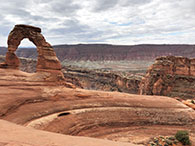 n for a couple weeks but there are images from Utah that I’m carrying close through this cold and grey New England spring. Not really images, more like colors: white snow, blue sky, and green trees…. And then there’s the red.
n for a couple weeks but there are images from Utah that I’m carrying close through this cold and grey New England spring. Not really images, more like colors: white snow, blue sky, and green trees…. And then there’s the red.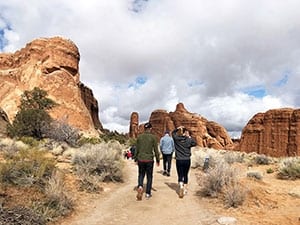 sides being the birthplace of Ruth (one of my biblical heroines), it is also the last bit of wilderness where the Israelites stayed before entering the Promised Land. It is where Moses’ Exodus story ended, where he died and was buried, never able to enter Canaan himself.
sides being the birthplace of Ruth (one of my biblical heroines), it is also the last bit of wilderness where the Israelites stayed before entering the Promised Land. It is where Moses’ Exodus story ended, where he died and was buried, never able to enter Canaan himself.
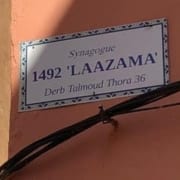
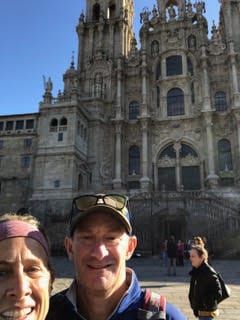 In theory, the medieval pilgrimage routes of Europe shouldn’t have held any special allure for me. “It’s such a Christian thing,” several people commented when I told them about our travel plans. I am a 53-year-old Jew, but I am also a lover of the outdoors, of physical challenge, and of meditation. John and I wanted a taste, so we chose a relatively short section, 210km, 10 days, on the Camino de Santiago, a thousand mile and thousand year old migratory path that culminates in Santiago de Compostela, Spain with an emotional mass held in its ornate cathedral.
In theory, the medieval pilgrimage routes of Europe shouldn’t have held any special allure for me. “It’s such a Christian thing,” several people commented when I told them about our travel plans. I am a 53-year-old Jew, but I am also a lover of the outdoors, of physical challenge, and of meditation. John and I wanted a taste, so we chose a relatively short section, 210km, 10 days, on the Camino de Santiago, a thousand mile and thousand year old migratory path that culminates in Santiago de Compostela, Spain with an emotional mass held in its ornate cathedral.
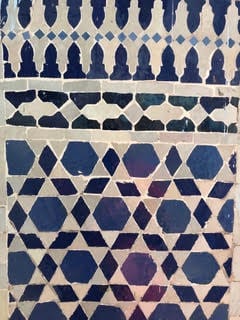 Spanish and Portuguese Jews fled to North Africa, the synagogue opening in Marrakech marked that Sephardic migration. I flashed back to my 7th grade French teacher, a Jew from Morocco – meeting her as a privileged, white, suburban kid in the 1970’s made an impact that has lasted to this day. Back then there was nothing more exotic to me than a French-speaking female Jew from Africa of all places. Who knew?
Spanish and Portuguese Jews fled to North Africa, the synagogue opening in Marrakech marked that Sephardic migration. I flashed back to my 7th grade French teacher, a Jew from Morocco – meeting her as a privileged, white, suburban kid in the 1970’s made an impact that has lasted to this day. Back then there was nothing more exotic to me than a French-speaking female Jew from Africa of all places. Who knew?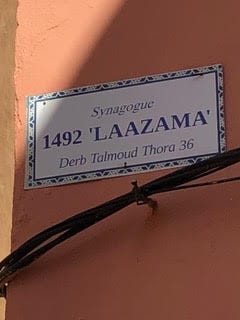 It wasn’t until I was sitting on the plane, writing down thoughts on the way back to North America, that I mused on our walk along the Camino followed by a journey to Morocco mirroring the migratory pattern of Jews over hundreds of years…. Walking, not toward a religious ceremony, but because they were chased out, first from Spain and Portugal and later from various North African countries.
It wasn’t until I was sitting on the plane, writing down thoughts on the way back to North America, that I mused on our walk along the Camino followed by a journey to Morocco mirroring the migratory pattern of Jews over hundreds of years…. Walking, not toward a religious ceremony, but because they were chased out, first from Spain and Portugal and later from various North African countries.

 those evenings as harbingers of spring, sunlight angling through sooty, city windows, shining on the yellow daffodils I’d purchased at the grocery store. My little girl in a white short-sleeved dress and patent leather shoes – I hadn’t fully committed to Judaism and the décor was some version of Easter.
those evenings as harbingers of spring, sunlight angling through sooty, city windows, shining on the yellow daffodils I’d purchased at the grocery store. My little girl in a white short-sleeved dress and patent leather shoes – I hadn’t fully committed to Judaism and the décor was some version of Easter.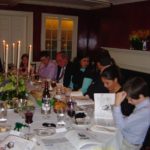
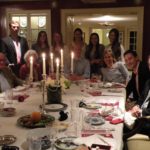
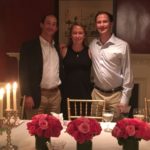
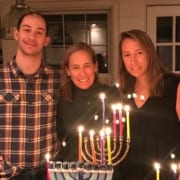
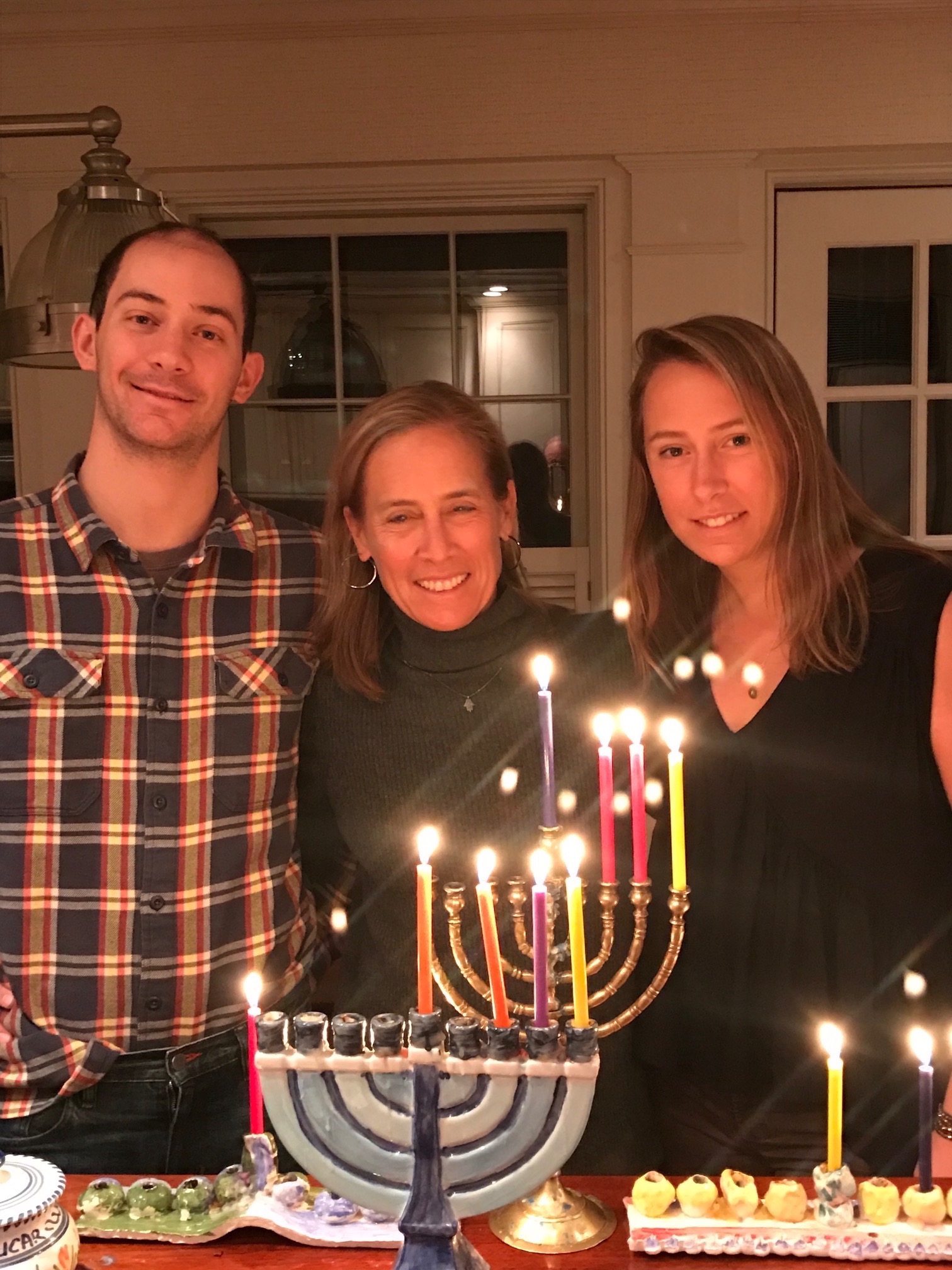
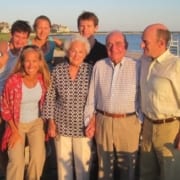
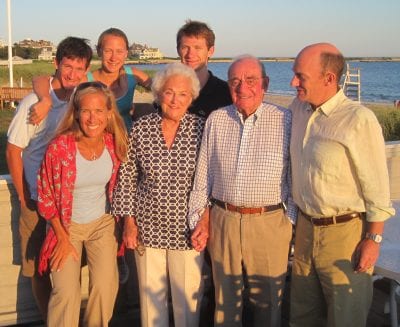 Have you read the
Have you read the 
